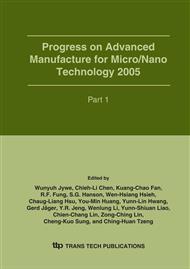p.1081
p.1087
p.1093
p.1099
p.1105
p.1111
p.1117
p.1123
p.1129
The Inverse Prediction of the Geometry of a Two Dimensional Plate with a Rectangular Cavity
Abstract:
The contour of a two dimensional plate with a rectangular cavity was predicted by the linear least-squares error method. In the analysis process the heat conduction equation and the boundary conditions were discretized to form a linear matrix equation. On the basis of the concept of a virtual area, the unknown contour of the two dimensional plate was converted into virtual boundary temperatures that can be definitely expressed. Under the condition that the solution form and the initial values didn’t need to be preset, the contour of the two dimensional plate was predicted from temperatures of some points in the plate by only two inverse processes. The results show that even though the positions of the measured points are different the temperature field of the whole virtual system doesn’t change. When the number of the measured points is decreased or the measurement error is increased, the error of the prediction will increase. With reasonable measurement error, the geometry of the plate can be successfully predicted from a few measured points by the method proposed in this work.
Info:
Periodical:
Pages:
1105-1110
Citation:
Online since:
January 2006
Authors:
Keywords:
Price:
Сopyright:
© 2006 Trans Tech Publications Ltd. All Rights Reserved
Share:
Citation:


